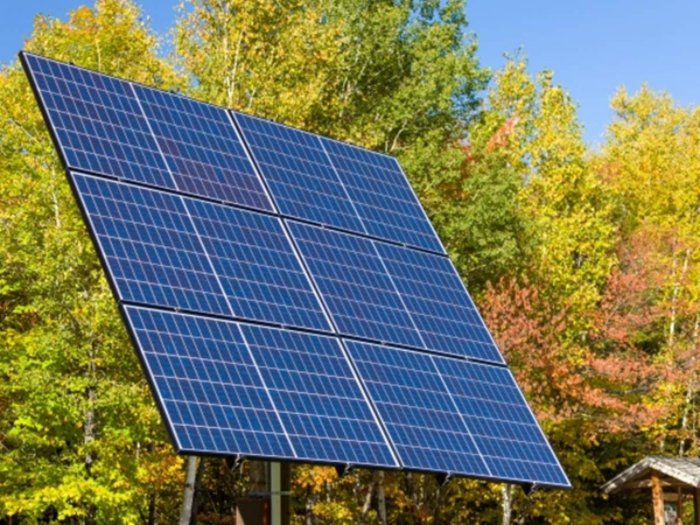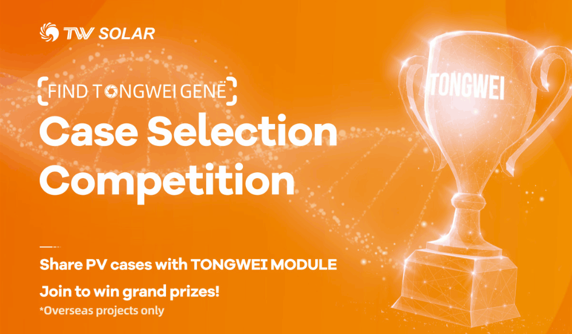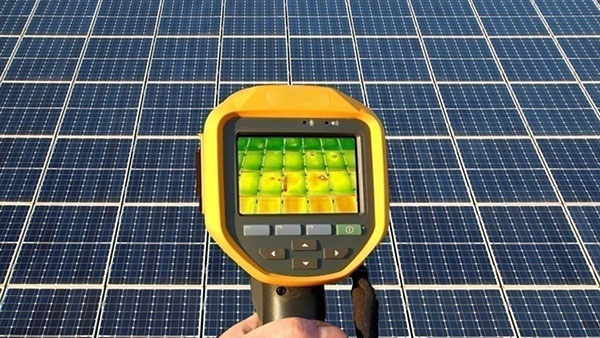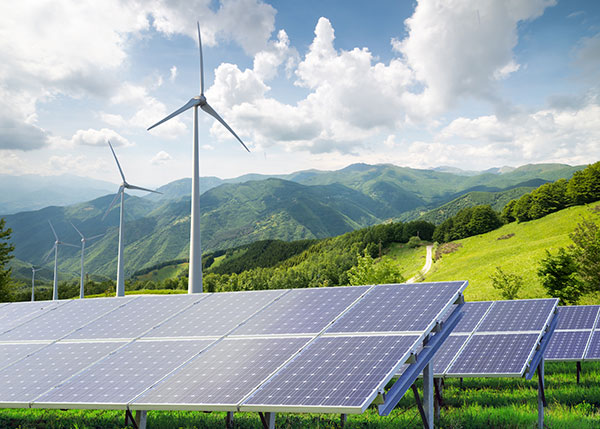Solar Panel Temperature
The level of performance of polycrystalline solar panels is a critical factor that is subject to a significant influence from the temperature of the solar cells . As a norm, any idea of performance of the solar panels is accompanied by testing, and it happens in strictly fixed conditions. Those circumstances under which a standard polycrystalline solar panel may be tested are usually indicated as STC, and one of the conditions is the temperature to remain 25 degrees Celsius . It is certainly convenient to apply a fixed set of conditions to evaluate the performance of each type of solar panel; however, in reality, few solar batteries could be located where the temperature does not exceed this level much.

In case the temperature of the solar battery increases above this mark, the performance of the panel will shorten, and for every additional grade of heat, the efficiency will drop by 0.5 %. The performance of polycrystalline solar panels depends much on the temperature; therefore, when the heat reaches +45 degrees of Celcius, the efficiency of the battery is likely to be subject to a 10% decrease . This fact directly affects the volumetric yield of electric energy produced by a solar panel, which can be output to a network or supply for domestic needs.
Several factors lead to the augmented temperature of the solar panels:
-
Ambient temperature: If the temperature is above 25 degrees, the panel will become hotter.
-
Solar irradiance: The closer to the sun is passing around 24-30 Celsius, that is why very often the days are getting hotter; the irradiance also raises the temperature of the panel.
-
Wind speed: The less windy it is, the less temperature difference is going to occur.
-
Mounting type: Usually, the closer to the roof mounting are, the less wind it will be
-
for cooling up the battery, the less divergence of temperature is going to be, leading to overheating.
Cooling methods
Surface cooling: The aspects allowing to reduce the passively affective heat can serve by lifting up the batter off the roof or applying white painting of the surface reducing sunlight absorbing.
Internal cooling: External channels are filled up with liquid water passing through them and cooling down the cells of solar panels applied to the battery.
The practice of applying both methods in US predictors shows quite ponderous results. Thus Arizona-based Noor Iranian Islamic Solar Power Centre shows a 5% yield increase due to their applying white gravel instead of pavement under the battery . Another application in California shows that the booster battery including active cooling gained a 15% advantage in its density of the yield against the top heat of the day.
Humidity
Polycrystalline solar panels’ performance and longevity are intimately linked to humidity. High levels of humidity, particularly in the atmosphere, leave the panels vulnerable to moisture ingress. This is primarily an operational issue, as the glass-backed modules will see their cells degrade and lose efficiency. Humidity speeds up the corrosion and deterioration of the components. Ingressing moisture would often cause delamination of the weather-protective layers applied to the front and back of the panel. As these layers become separated from the rest of the structure, the cells inside become completely unusable.
Increasing humidity affects the degradation of encapsulant layers that are responsible for the cells’ protection. Over time, they absorb moisture, which reduces their transparency and reflectivity. Consequently, sunlight is unable to get through the encapsulant, meaning that the photovoltaic cells are not getting the delivered. According to Georgios Liaptsis from N.C.S.R. “Demokritos” Institute of Nanoscience and Nanotechnology, “solar panels near coastal areas may experience up to 20% more degradation through the duration of their life compared to similar solar panels in arid regions.” The maintenance of the panels would prevent any lasting damage, but this requires an increased budget and additional workers to address the problems as they arise.
Moisture ingress reduces efficiency by affecting the optical properties of the panel. By preventing generally dry climates, the material remains moist, and build-up over time would mean increased humidity levels. The water needs to have reached sufficient levels to make it through the front protective layer. This has also caused an electrical problem as delamination implies that the electrical insulation also failed. The integrity of the electrical insulation depends on controlled weathering, whereas the solar panels used in this particular installation are degraded and highly absorbent. This implies that the insulating layers could not withstand the delamination of the photovoltaic cells and cannot guarantee electrical safety and efficiency. A solar installation near the Gulf of Mexico lost a performance of approximately 10% of its rated output capacity, only five years after being deployed.
Wind Speed
Wind speed is a sometimes ignored but a crucial environmental factor which affects the performance of polycrystalline solar panels. Overall, it primarily impacts the cooling and thus the efficiency of solar panels, but high wind speed may also create structural challenges and risks of damage. Specifically, adequate air flow may significantly reduce the temperature under which solar panel operate, and wind is the factor that facilitates the flow of air. For example, one study found that the growth of wind speed from 0 to 5 m/s decreases the panel temperatures by over 10°C, increasing efficiency by about 5% . In this way, the main benefit of both moderate and high wind speeds is the increase temperatures under which solar panels operate, and I have failed to identify any direct benefits of severe winds.
Key Benefits of Wind
As already mentioned, the major factor that facilitates panel cooling is adequate air flow. Specifically, when the wind blows, it moves through the panel surface, taking away some of the heat . Moreover, winds allow panels to operate close to, or at some instances, under the ambient temperature, which is crucial since the efficiency of panels decreases with temperature. Therefore, the benefit of wind is the cooling of solar panels, however, this effect is beneficial only given certain speeds: I did not find any information on the effect of low-speed wind application.
Issues if Wind Speed is High
If the wind speed is high, the major benefit of wind cooling may become a disadvantage, as some structural challenges emerge. High wind speed implies that the solar panels and their mounts must be built strong enough to avoid displacement. In such cases, the installation of systems in the areas with high wind speed includes structural planning and the application of robust hardware. For example, in my region, I have noted that the installations in the windy hills have stronger mounts and lower vertical profiles. Moreover, in case of severe winds, the installation may be partially dismounted or have the racking reduced in order to decrease the amount of surface against the wind.
I have performed one real-life example, comparing my observations of installations in the inland and coastal areas. In the latter, the higher wind speed cools the panels more effectively, and thus the coast-wise knowledge often states that in such areas, one may install as many solar panels as desired since they will never overheat. To benefit from wind cooling, some new panels are designed to be elevated or to leave some gap between the panels.
Light Intensity
Light intensity, expressed as irradiance in watts per square meter, is the single most important factor responsible for the performance of solar panels. The performance and efficiency of polycrystalline solar panels are directly proportional to the amount of sunlight they receive; thus, light intensity, along with the weather, time of day, and season, accounts for its enormous effects on energy production.
Increased light intensity leads to a more significant power output from photovoltaic panels. Specifically, while a conventional polycrystalline solar panel installed at a latitude of about 40° will generate approximately 200 watts per square meter in direct sunlight, with an intensity of 1000 W/m², it can also produce as low as half the power in the presence of clouds or other presumably weaker conditions, amounting to 250 W/m² and 50 watts .
Ways to Maximize Light Absorption
Common methods of shading canopies, e.g. shrubs, are avoided, as they typically cast a long shadow and lower solar panel performance. Instead, in efforts to minimize the energy reflected from solar panels, the objects of interest are covered with a variety of anti-reflective or anti-glare coatings. When faced with the challenge of avoiding excessive reflection and therefore optimizing solar panel efficiency, an exemplary anti-reflective coating is capable of directing up to 5 percent more light toward the panel, yielding greater efficiency .
Trackers as a Solution for Enhanced Light Exposure and Efficiency
A solar tracker is a mechanical device that follows the position of the sun at any location and inclination on Earth throughout the day. As a result, the solar tracker keeps the solar panel at the optimal angle to the sun and boosts light intensity; expectedly, commissioning a tracker results in a greater energy output of standard commercially available silicon photovoltaic cells by 20-25%, especially in areas with high solar altitude variations like Sweden and Greenland.
The Real-World Effects of Light Intensity Variations
Intercountry and interregional comparison can be performed to gauge the real impacts of these variations on the effectiveness and efficiency of solar panels. Specifically, a solar installation in a region closer to the equator is expected to be more efficient and productive due to the more direct and constant sunlight exposure throughout the year. As an example, a solar power plant in Kenya is reported as having a 15 percent greater annual energy yield per kWp when compared to a solar power plant at the same period in northern Germany; the higher average light intensity is a substantial factor contributing to these observed differences .
Technological Ways to Use Light Intensity
Innovations continue to improve light intensity conversions; thus, technologies like bifacial panels are introduced. Relying on their ability to absorb reflected sunlight from the ground or surrounding objects, bifacial solar panels have the solar cell’s front and rear sides exposed. They maximize light intensity to generate 10% more energy.
Altitude
Altitude is a significant environmental factor with considerable potential impacts on the performance of polycrystalline solar panels. Higher altitudes result in reduced atmospheric interference with solar irradiation, due to factors such as diminished air density and cloud cover in comparison with lower areas. As a result, the thinner atmosphere causes solar panels to receive more potent sunlight, leading to potentially greater efficiency.
Increased Solar Irradiance
Notably, at higher altitudes, solar panels interact with more solar irradiance. Specifically, a solar panel may receive up to 10% more irradiance than an identical model installed at sea level if the elevation is higher than 2,000 meters. It follows that the intensified access to sunlight may well promote increased power generated by the panels, provided other environmental factors remain similar.
Challenges Related to High Altitudes
However, high altitude conditions are associated with unique challenges, such as lower – and potentially much lower – temperatures, as well as possibly harsher weather. Cold temperatures are generally beneficial for the efficiency of the panels, but they also increase the risk of mechanical failure if not accommodated by the design or materials. As a result, solar installations at higher altitudes would presumably necessitate adjusted materials and structures. To illustrate this point, a solar farm in the Andes of Argentina that is situated at a height of over 3,000 meters above the sea level has been designed to exploit increased solar irradiation. The farm’s results indicate that the solar panels installed in this location are up to 15% more efficient than those in lower positions. The increased efficiency is presumably due to a clearer sky and a higher number of solar rays. Since the high irradiation is the installation’s goal, its implementation involves the use of adjustable angles, and its framework is designed for added durability against the higher wind pressure. The panels also present increased resistance to the damage from copious amounts of UV – a common high-altitude factor – and are thermally flexible.
Air Pressure
The significance of the role lower air pressure plays in the efficiency of polycrystalline solar panels is generally less discussed as a factor affecting the latter. In any landscape at a higher altitude than average, air pressure will manifest itself as a relevant variable, impacting the efficiency and power output levels of a solar installation. Despite the possible issues of varying air pressure, the advantages of such conditions for a power industry technology like solar panels are significant. As a result of the decrease in atmospheric density, lower air pressure can lead to an increase in air clarity, as there are fewer molecules and particulate matter in the atmosphere to scatter or absorb sunlight. As a result, solar irradiance can see an increase of up to 5% at a 1,000-meter altitude when compared to the solar radiation rates at sea level. However, the conditions in which allowable air pressure can decrease can impose certain challenges on the solar installation, particularly on components engineered for sea level work, such as cooling systems.
High Altitude Farms
A prominent example of high-altitude lower air pressure effects can be observed in the closed basins of the Tibetan Plateau, the world’s most extensive and highest plateau located in China. Altitudes in altiplanos of this area can exceed 4,000 meters above sea level, which results in available mole fraction of nitrogen and oxygen to decrease from the average 78% and 21% respectively. Tibetan Plateau’s solar farms generate an increase in power output of up to 20% when compared to installations in higher-pressure environments. Factors contributing to such an increase in power output include the reduction of air pressure mentioned above, as well as clearer, less turbid air. Materials used in high-altitude solar panels, frames in particular, also feature accommodations for this environmental element, preventing an excessive structural response to the less dense air. The installations also make a use of supplementary schemes to deal with increased UV levels in the solar irradiance, as lower air pressure can hypothetically lead to a more intense ultraviolet component.

Additional Factors Influencing
In addition to temperature, humidity, and light intensity, there are several other variables of the environment that have a substantial influence on the performance of polycrystalline solar panels . Dust, shading, and the angle of installation are some of the most important factors regarding how effectively the panel can convert sunlight into electricity. The optimization of these processes can result in outstanding improvement of the efficiency and service life of the panels . That is why it is essential for the designers and operators of the solar systems to consider those factors during planning and the proper maintenance of the technology .
Dust Accumulation
Dust on the solar panels interfers with the exit of the sunlight to the panels’ surface. In an arid climate, dust may accumulate on the solar panels, causing power loss of up to 25% . Cleaning of the surface may be done manually, by use of a robot, or through use of an easy-to-clean coating. The use of labor-intensive cleaning methods is minimized in favor of automatic modules and easy-to-clean modules.
Shading
In addition to dust accumulation, other sources of shading such as trees, buildings, and other extrusion may lead to great loss of perfomances. Shading a panel in one cell is likely to affect the whole module. As such, site selection is important, and the tools used include the Solar Pathfinders and softwares that perform the plot simulations throughout the year.
Installation Angle
The installation angle is one of the most important factors that influence the performance of the solar panel. As such, the angle affects the amount of sunlight to be absorbed. Generally, north-facing panels in the northern hemisphere and south-facing panels in the southern hemisphere will help in ensuring maximum absorption of sunlight throughout the day . As such, the installation angles will be approximately equal to the average latitude.
Innovative Solutions
The solar industry has thus introduced several innovative solutions to the stated challenges. Bifacial panels are an example of such solutions that can absorb solar energy from both sides. Such innovative technological advancements have the potential to increase the amount of energy that is produced.



